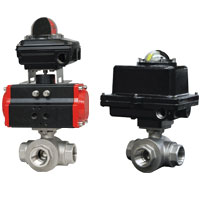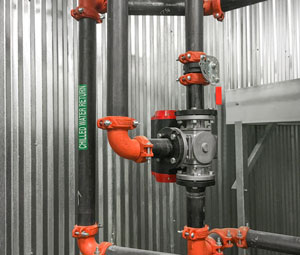
Dwyer Instruments offers a diverse line of 3-way ball valves with a variety of body materials such as brass, stainless steel, and plastic. We also have a variety of end connections to choose from, including: NPT (National Pipe Tapered threads), tri-clamp, flanged, or socket.
What is a 3-way ball valve?
A 3-way ball valve, also known as a multi-port valve, has 3 ports or openings, where one port is common to the other two. This third port offers the fluid an alternate path of travel, which permits the valve to have one inlet and two outlets, or two inlets and one outlet. They also provide simple and economical flow shut-off and direction control in one valve body.
 How does it work?
How does it work?
The bore of the valve’s ball is drilled into either a “T” shape or an “L” shape . The “T” ports are used to direct liquid to multiple sources and are known as a mixing type valve. The flow will enter two ports and exit through the common port. The “L” ports are used to draw media from different sources and are known as diverting type valves. The flow enters the common port and exits through one of the other two ports.
What are 3-way valves used for?
The versatility of 3-way ball valves lends them the ability to better control flow in more complex situations than a typical 2-way valve. Common uses for this type of valve include:
- Cutting off or shutting off flow
- Blocking flow in one direction while continuing flow in another direction
- Combining or mixing flow from two different locations
- Diverting flow from one location to another
- Dividing liquid from a single location into two outgoing locations
- Alternating flow between two outgoing locations
All of Dwyer’s 3-way ball valves are configurable with pneumatic and electric actuators for precision alignment. Our Series SN solenoid valves can also be used to electrically switch the air supply pressure between the air supply ports for opening and closing the valve and limit switches for remote monitoring. Please visit our website or call 1-844-372-5551 for more information.
